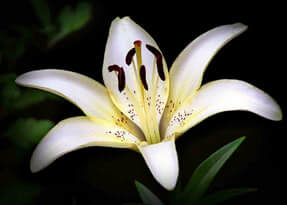
Spring is in full swing in the North Bay, which means the old adage “April Showers bring May Flowers” is truer than ever. Our furry friends may become targets, of sorts, to some of our favorite flowers and plants very soon. It’s a good idea to familiarize yourself with certain common household plants that may be toxic to your pets and avoid adding distress to your summer plans!

Many green-thumb gardeners are aware that lilies are some of the most toxic flowers to our pets that we may grow in our garden, but issues often arise when someone receives a bouquet and unwittingly exposes their inquisitive housecats. The lily family includes Easter Lilies and Tiger Lilies, as well as the rest of the flowers in the genus Lilium. These plants cause irreversible kidney failure in cats who ingest even a small amount of pollen, petals, or leaves, so we recommend that no lilies be brought into a house with cats. Interestingly, Lily of the Valley is also very toxic, though it is not in the lily family.
Other common plants that are toxic to our pets are tulips (especially the bulbs), irises, morning glory, wisteria, foxglove, Sago palms, azaleas, and hydrangeas, as well as many others too numerous to name. If you’re not sure if a plant in your yard or house is toxic, the ASPCA Poisonous Plants website is an excellent resource.

Common signs that your furry friend might have eaten something toxic are a noticeable lack of energy or lethargy, vomiting, diarrhea, lack of appetite, and abdominal pain. If you are concerned your pet may have eaten a toxic plant, you can call the ASPCA Animal Poison Control Center at (888) 426-4435 for advice ($65 fee) as well as calling our office, or the Solano-Napa Pet Emergency Clinic if we are closed.
We hope that if we remain aware of our gardens, our pets, and what they put in their mouths, the coming months are sure to be a beautiful sight for all!
